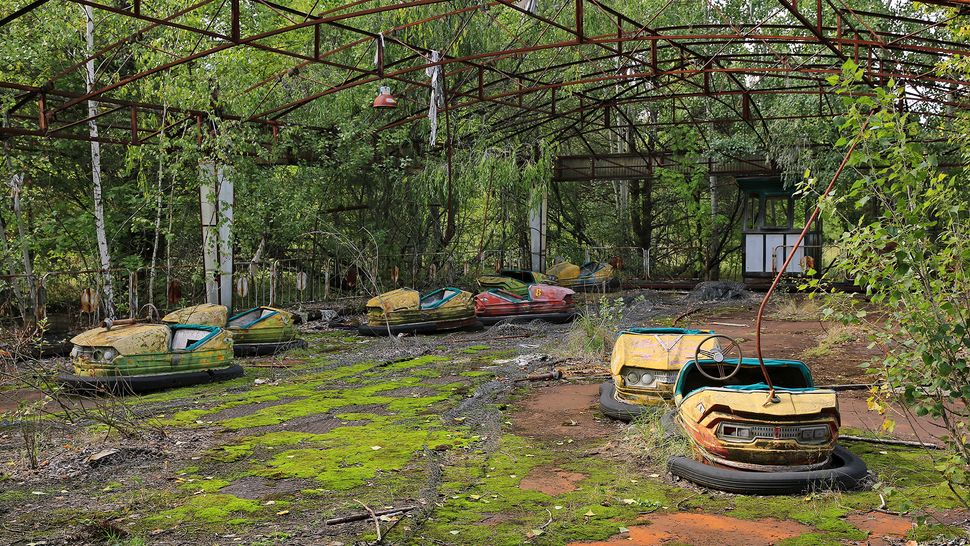Chernobyl, the site of the deadliest nuclear accident of all time, should become a World Heritage site. If their efforts succeed, the site of one of humanity's darkest chapters could join the ranks of the most iconic monuments to human culture and civilizations, such as Jordan's ancient city of Petra, the immense pillars of Stonehenge, Beijing's Forbidden City, and the towering Easter Island statues in Rapa Nui.
On April 26, 1986, 35 years ago, a reactor explosion rocked the Chernobyl Nuclear Power Plant, located about 81 miles (130 kilometers) north of Kiev. Two workers died almost immediately, dozens died soon after and thousands more later died or were sickened by radiation exposure, as fallout from the disaster dispersed across Ukraine, Russia, and Belarus.
Soviet officials evacuated a 19-mile (30-km) area around the plant, now known as the Chernobyl exclusion zone. The Ukraine government seeks to add the plant and the zone around it to the global list of World Heritage Sites maintained by the United Nations Educational, Scientific and Cultural Organization (UNESCO).
To be considered for the World Heritage List, a site must be of outstanding universal value and should display at least one quality that matches the agency's selection criteria, according to the UNESCO website. Some locations on the list represent breathtaking and unique examples of grandeur in the natural world, such as Yosemite and Yellowstone National Parks in the United States; Vietnam's Hạ Long Bay; Australia's Great Barrier Reef; and the primeval Białowieża Forest straddling Russia and Belarus.
Other locations, such as the Great Wall of China, Mexico's Chichén Itzá ruins, and the city of Venice, Italy, earned a spot on the list for their importance in human history as well as their rare beauty. Sites on the list obtain certain legal protections and can receive financial assistance from the World Heritage Fund to help with preservation, according to UNESCO.
In order for a site to be eligible for UNESCO's list, it must first be added to a cultural and historic heritage list in its country of origin. Oleksandr Tkachenko, Ukraine's Minister of Culture and Information Policy said, that the ministry initially sought to add the abandoned Chernobyl Nuclear Power Plant and nearby buildings to a list in Ukraine, and officials are now considering expanding that proposal to encompass the entire exclusion zone. We believe that putting Chernobyl on the UNESCO heritage list is a first and important step towards having this great place as a unique destination of interest for the whole of mankind. The importance of the Chernobyl zone lays far beyond Ukraine's borders. It is not only about commemoration, but also history and people's rights
In fact, tourism is already booming in the exclusion zone. One of the cities in the zone Pripyat, home to about 49,000 people in 1986 is today a post-apocalyptic ghost town, its homes, schools, and hospitals uninhabited and reclaimed by plants and wildlife. The exclusion zone was initially opened to visitors in 2010, and Pripyat's eerie, overgrown buildings quickly became a popular destination for photographers and so-called disaster tourists.
But Chernobyl tourism really took off after the success of HBO's 2019 dramatic series, Chernobyl, with guides in Ukraine reporting a 30% rise in 2019 bookings compared to the year before, Live Science previously reported. Approximately 124,000 tourists visited Chernobyl last year, and about 100,000 of them came from outside Ukraine, Agence France-Presse (AFP) reported in 2020.
Scientists are also keeping an eye on Chernobyl, to track how wildlife in the exclusion zone is adapting to levels of radiation exposure that make the zone unsafe for human habitation and some of their findings are surprisingly positive.
For example, recent surveys show that gray wolves (Canis lupus) are thriving near Chernobyl, likely in part because they have lots of prey and plenty of territories that are untouched by humans. And a rare species of Asian wild equine known as Przewalski's horse (Equus ferus przewalskii) is also flourishing in the exclusion zone.





0 Comments